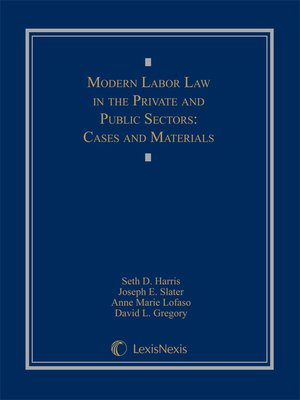
Sign up to save your library
With an OverDrive account, you can save your favorite libraries for at-a-glance information about availability. Find out more about OverDrive accounts.
Find this title in Libby, the library reading app by OverDrive.



Search for a digital library with this title
Title found at these libraries:
| Loading... |
Modern Labor Law in the Private and Public Sectors is a casebook that presents a truly modern approach to labor law in the United States. Modern Labor Law incorporates two modern trends in labor law: the shift of union density from the private-sector to the public-sector and the growth of organizing outside the NLRA process. During the course of writing, the authors have continued to update the content to reflect the changes in public-sector labor laws in several states and the new debates over policy. Each chapter begins with cases and materials relating to private-sector workers and also includes materials relating to the same issue in the context of public-sector employment. This book incorporates both these modern trends, so that students entering the practice of labor law — on the side of unions, employers, or government agencies — will understand what they are likely to encounter.
This book is structured around the life cycles of the organizing and collective bargaining processes. The first part of this casebook provides a history of labor relations in the United States, and the coverage of labor statutes in the private and public sectors. It then moves to organizing and collective worker protests, with one chapter mostly dedicated to modern alternatives to traditional union organizing, and other chapters explaining the traditional labor law protections for worker protests. This part also explores why and how the law of public-sector labor relations developed so much later and, in many ways, so differently, than private-sector law. The bulk of the rest of the book studies the life cycle of unions: collective bargaining; strikes, economic weapons, and impasse resolution in the public sector; contract administration; and secondary activity and related actions. It concludes with three chapters that examine the rights of individual workers within their unions, bargaining relationships in transition (successorship), and preemption.






